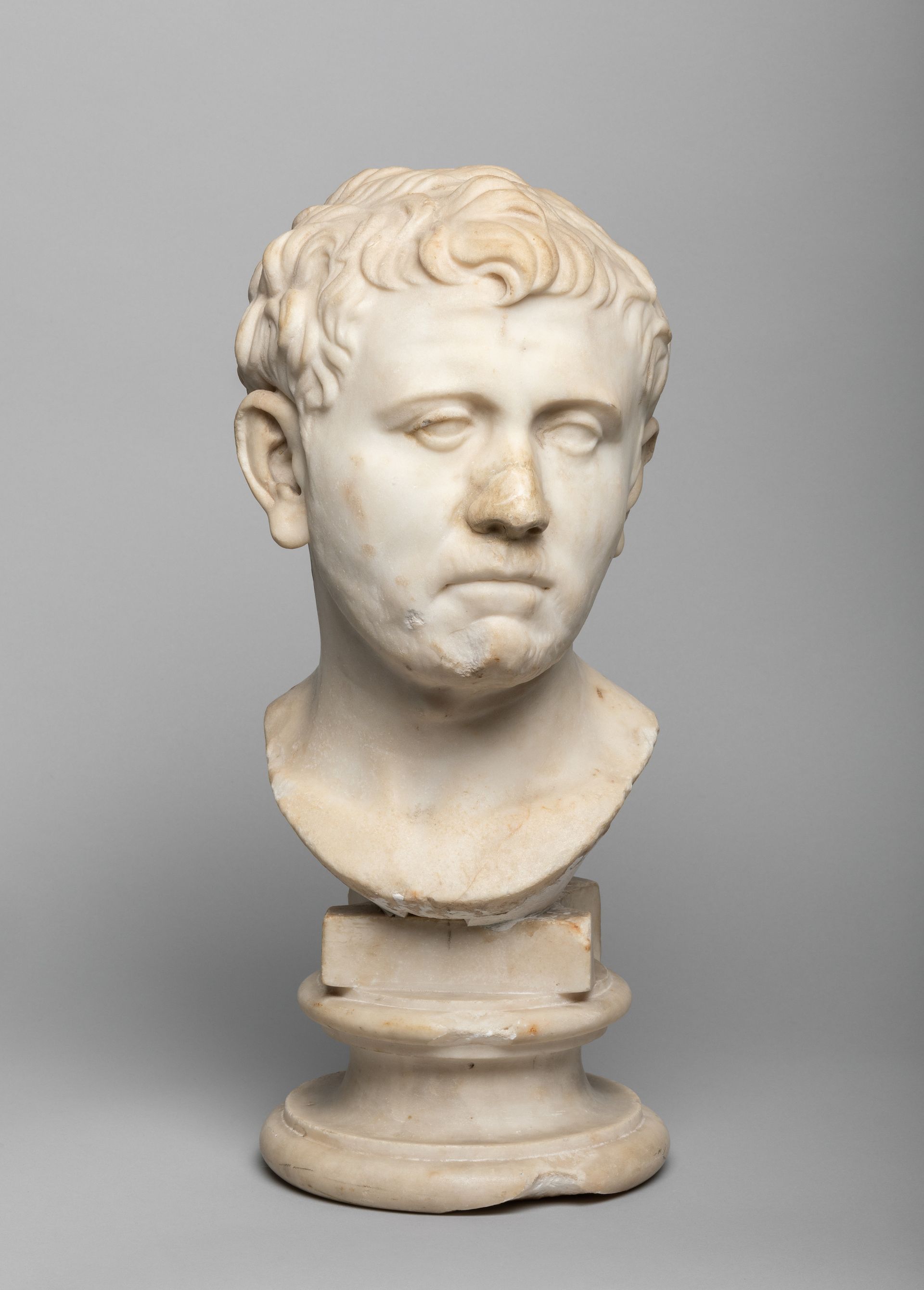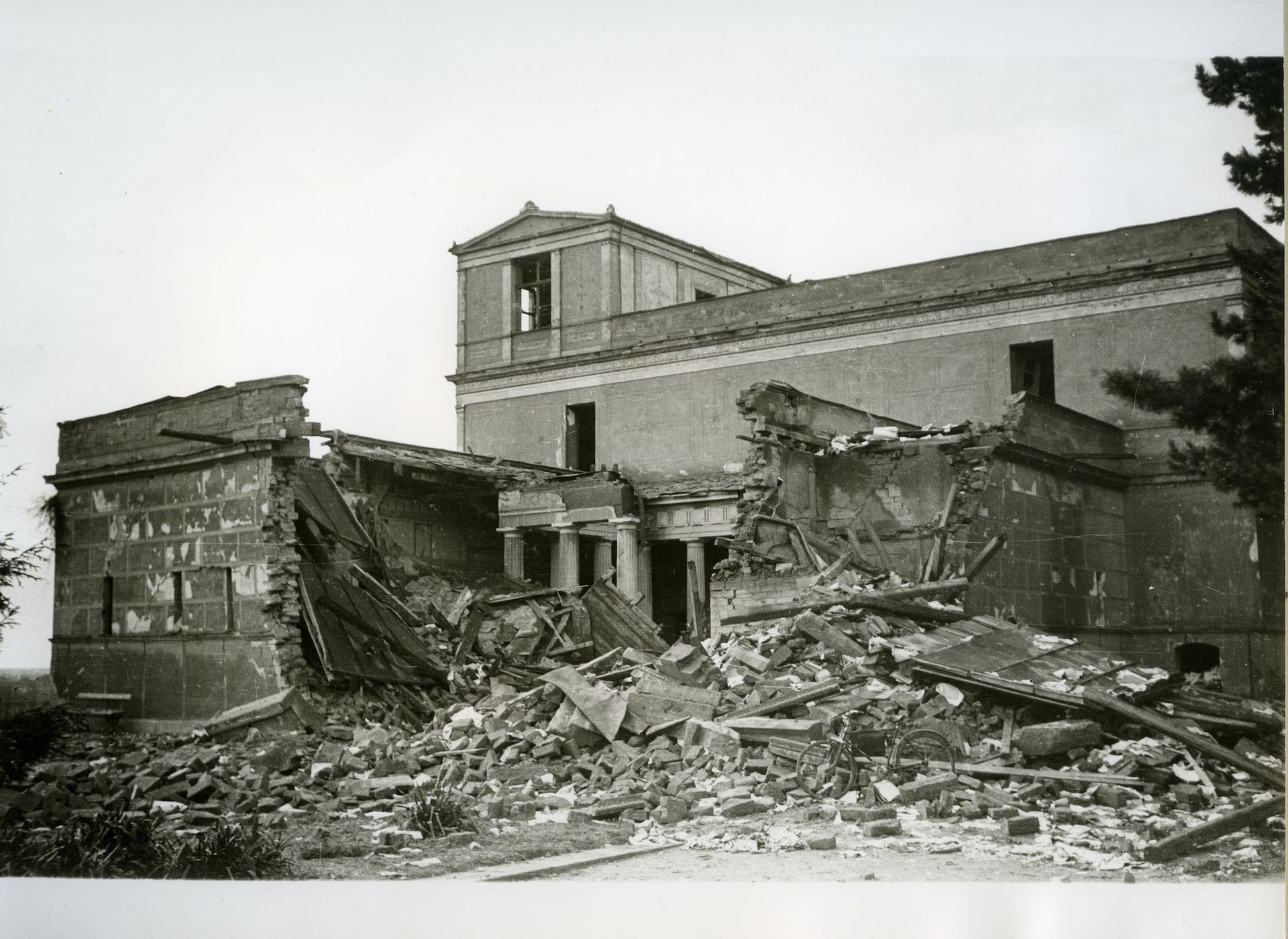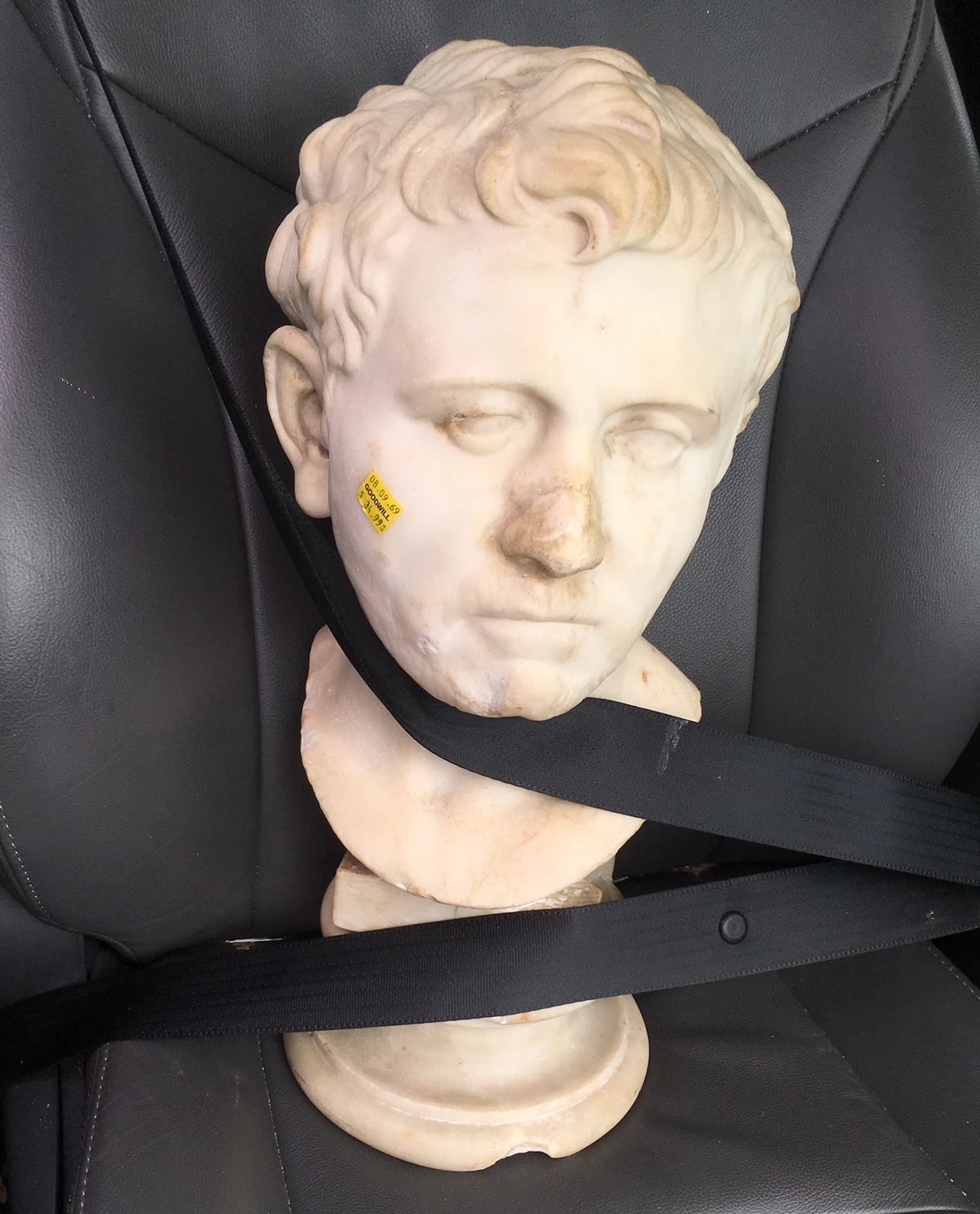Pity the poor Goodwill employee who had to cart that 52-pound carved marble bust to wherever in the store you put something like that. Less pity, perhaps, can be spared for Laura Young, the owner of a vintage goods store in Austin, Texas, who in 2018 went into the local Goodwill store in search of objects to resell and bought for $34.99 what turned out to be a rare and extremely valuable carved bust, believed to depict ancient Roman commander Drusus Germanicus. Subsequent research by a Sotheby’s expert has found that the work is dated to the first century CE and was last known to be part of a museum collection in a Bavarian city in Germany.
“I’ve found a lot of interesting things at Goodwill in the past,” Young says, noting a Chinese painting that she had bought there for a pittance and later sold at Christie’s for $63,000. The bust was “on the floor, under a table. It looked pretty dirty, pretty old”, and thinking that someone might buy it for a garden statue, she bought it and “asked some guy who worked there to carry it to my car”, where she secured it with a seatbelt .
Four years later, Young is returning the bust to Germany—specifically to the Bavarian Administration of State-Owned Palaces, Gardens and Lakes (or Bayerische Verwaltung der staatlichen Schlösser, Gärten und Seen). When it is reinstalled, a plaque will mention her name.
Before the sculpture goes back to Germany, it will be on view over the next year at the San Antonio Museum of Art, which has a collection of ancient Roman art and was instrumental in facilitating the bust’s restitution to Bavaria. Jessica Powers, interim chief curator of the art of the ancient Mediterranean world at the museum, noted that the identification of the subject of the bust is still in question. “It is a handsome portrait of a young man with a beard,” she said. “It might have been a son of Pompey. We don’t know who it is of.”

Portrait of a man, Roman, late 1st century BCE-early 1st century CE, marble
Lent by the Bavarian Administration of State-Owned Palaces, Gardens and Lakes
For now, let’s say it is of Drusus. The bust of Drusus Germanicus (38-9 BCE), who also went by the names Nero Claudius and Drusus the Elder, and gained fame for a successful military campaign that claimed German land for the Roman empire but died young from injuries sustained from falling off his horse, was looted at the end of the Second World War from the grounds of Pompejanum, a mid-19th century replica of a Roman villa built in Aschaffenburg by Bavarian King Ludwig I (1786-1868), an avid Italian art and antiques collector.
How the sculpture went from Italy to Bavaria, presumably in the 19th century, is not a matter of dispute. How it went from Germany to the US (it is a bit heavy for the average soldier’s rucksack) and ended up in a Goodwill store in Texas is unknown, but what is clear is that the bust was taken illegally. “Goodwill doesn’t do due diligence,” Young says. “They just have a door in the back where you leave stuff and then drive away.”
Leila Amineddoleh, a New York City attorney specializing in art law and who had been contacted by Young after Sotheby’s, where she tried to sell it, informed her of the bust’s past and that it could not be sold legally. “US law doesn’t recognize the transfer of title when theft is involved,” Amineddoleh says. “I advised Laura not to sell it, either publicly or privately, that is, on the black market. She risked expensive legal battles or criminal penalties if she tried.”
Amineddoleh, who has been representing Young since the end of 2018, contacted Bavarian authorities about the bust, negotiating with that long-titled government agency for it to cover the costs of storage, insurance, crating and shipping the sculpture back to Germany, as well as providing a finder’s fee for her client and allowing the San Antonio Museum to display the piece. A final agreement was reached by the end of 2021, with the Bavarian government signing the last documents last week.

Wreckage of the Pompejanum’s courtyard after the bombing of Aschaffenburg in 1944. Photo courtesy of the Bavarian Administration of State-Owned Palaces, Gardens and Lakes.
The looting of European art and antiquities during the Second World War has led to a seemingly endless number of lawsuits by heirs of collectors and dealers looking to recover their families’ heirlooms, and a reckoning by museums and governments in the countries German soldiers conquered. “What is very unusual is that most instances of looting were committed by the Nazis—it is estimated that 20% of all the art in Europe was looted by the Nazis,” Amineddoleh says. “ However, this bust of Drusus Germanicus was most likely looted by a member of the Allied forces.”
The Pompejanum was heavily bombed in 1944 and likely was unguarded, so Allied soldiers could walk in freely and take what they liked. Looting of cultural property, Amineddoleh says, is “a crime of opportunity, no less then than now, as we see in Iraq and the Ukraine”.


